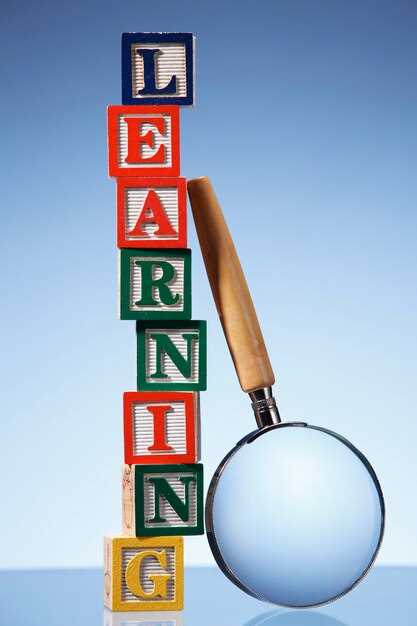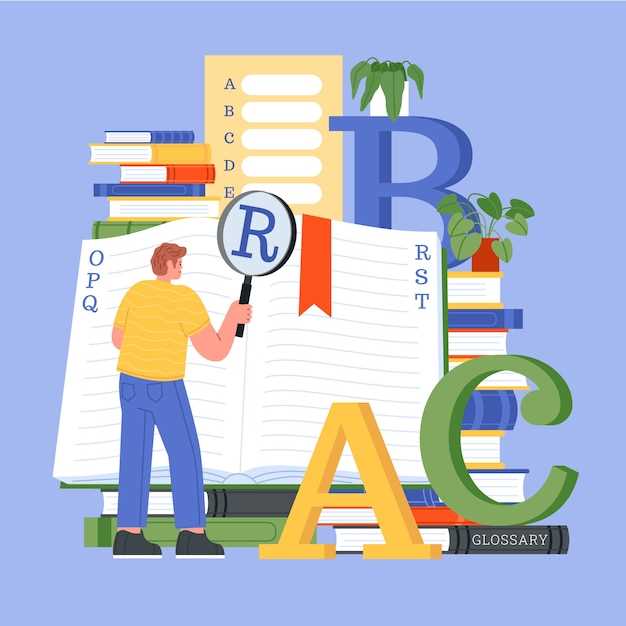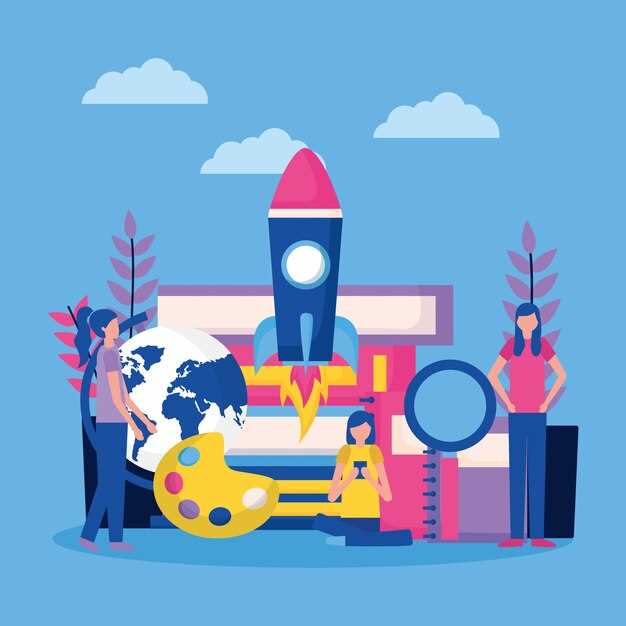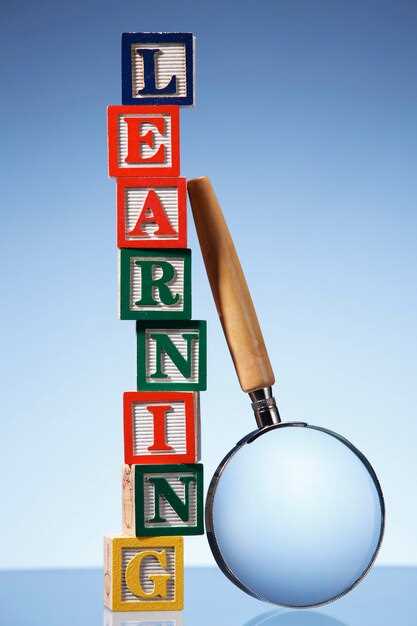Prioritize collaboration among educators and stakeholders to enhance curriculum development processes. Sharing insights and expertise can lead to the creation of diverse, inclusive educational frameworks that address varied learning needs. Allow classroom teachers, who engage with students directly, to provide feedback on the effectiveness of current curricula and suggest improvements based on real-world classroom dynamics.
Integrate emerging technologies that can facilitate personalized learning experiences. Utilizing data analytics and AI-driven platforms can tailor educational content to suit individual student preferences and capabilities, fostering better engagement and academic growth. This approach ensures that learners remain motivated and challenged, regardless of their skill level.
Continuously update educational content to reflect contemporary issues and knowledge advancements. As society progresses, it is vital to incorporate relevant themes into the curriculum that resonate with students and prepare them for future challenges. Topics such as sustainability, digital literacy, and global citizenship should be woven into the educational tapestry to create well-rounded individuals.
Evaluate and adapt pedagogical strategies regularly to keep the curriculum relevant and impactful. Emphasize active learning methodologies such as project-based learning and inquiry-based approaches, which actively involve students in their education, encouraging critical thinking and problem-solving skills. By maintaining a flexible and responsive curriculum, educators can better equip students for real-world applications of their knowledge.
Exploring Curriculum Development in Education

Focus on integrating real-world applications into your curriculum to boost student engagement and comprehension. Employ project-based learning to facilitate practical experiences that resonate with students’ future careers. Develop assessments that gauge not only knowledge retention but also critical thinking and problem-solving abilities.
Incorporate technology to enhance learning experiences and provide access to diverse resources. Utilize educational software and online platforms to implement interactive and flexible learning environments. Ensure that digital tools are used to complement, not replace, traditional teaching methods.
Align curriculum content with current educational standards and professional requirements. Collaborate with industry representatives to ensure the curriculum meets real-world demands. Stay updated with the latest educational research to continuously refine curriculum strategies.
Enhance inclusivity by adapting materials for diverse learning needs and styles. Incorporate differentiated instruction techniques and provide support resources for students of varying abilities.
| Strategy | Benefit |
|---|---|
| Project-Based Learning | Improves engagement and real-world skill application |
| Technology Integration | Expands resource availability and flexibility in learning |
| Standards Alignment | Ensures relevance and preparedness for professional fields |
| Differentiated Instruction | Caters to diverse learning needs and improves inclusivity |
Prioritize ongoing teacher development to support effective curriculum delivery. Organize regular training and collaborative sessions to explore new pedagogical approaches and share successful practices. Encourage teacher feedback to refine and enhance curriculum effectiveness.
Exploring Curriculum Development in Education

Implement project-based learning by designing curriculum elements around real-world problems that students can relate to and solve. This encourages collaboration and critical thinking, leading to higher engagement and deeper understanding of subjects.
Incorporate interdisciplinary approaches to foster a holistic learning experience. Develop modules that link sciences, arts, and humanities, allowing students to see the interconnectedness of different fields and how they contribute to solving complex challenges.
Utilize formative assessments frequently to tailor teaching strategies to the needs of students. Gather continuous feedback through quizzes, discussions, and peer reviews to adjust the curriculum dynamically, ensuring it meets learners’ individual progression and interests.
Encourage student agency by integrating opportunities for learners to make choices about their learning paths. Offer electives or independent study options where students can explore topics they are passionate about, cultivating intrinsic motivation.
Leverage technology thoughtfully. While integrating digital tools, focus on those that enhance learning outcomes rather than simply digitizing traditional methods. Tools like virtual simulations and collaborative platforms can enrich the educational experience if used purposefully.
Support teacher development alongside curriculum innovation. Provide regular workshops and collaborative planning sessions for educators to share best practices and develop innovative teaching methods tailored to the updated curriculum.
Continuously review and update curriculum content to ensure its relevance to current events and advancements in different fields. Engage with experts and industry professionals to keep the curriculum forward-thinking and aligned with the competencies required in various careers.
Understanding the Building Blocks of Curriculum Design

Identify the specific learning objectives that align with your educational goals. These objectives should be clear, measurable, and tailored to the needs of your students. Define what students should know and be able to do upon completion of the course, ensuring that these expectations are realistic yet challenging.
Select the appropriate content that supports the learning objectives. This involves curating relevant materials and resources that engage students and deepen their understanding of the subject matter. Ensure that the content is diverse, current, and inclusive, providing multiple perspectives and fostering critical thinking.
Decide on teaching methods that facilitate effective learning. Consider varying instructional approaches such as lectures, discussions, hands-on activities, or collaborative projects to cater to different learning styles. Utilizing a mix of methods helps maintain students’ interest and encourages active participation.
Design assessments that accurately measure students’ understanding and skills. These should be varied and can include quizzes, essays, presentations, or practical projects. Assessments should provide meaningful feedback, guiding both students and instructors in identifying areas for improvement and success.
Integrate technology appropriately to enhance learning experiences. Employ digital tools and platforms that support instruction, communication, and collaboration while ensuring that they are accessible and user-friendly for all students. Technology can augment traditional teaching methods, providing dynamic and interactive learning opportunities.
Evaluate and revise the curriculum regularly based on feedback and outcomes. Collect data from assessments and student evaluations to identify areas that require adjustment. This ongoing process helps ensure that the curriculum remains relevant and effective, adapting to changing educational standards and student needs.
Identifying Educational Goals and Objectives
Define the end-point by clearly articulating the overall learning outcomes you aim to achieve. Establish these outcomes in specific, measurable, achievable, relevant, and time-bound terms. Outline what students should know or be able to do as a result of the learning experience.
- Consult stakeholders including teachers, administrators, and parents to gain a variety of perspectives on what is necessary for student success.
- Analyze current educational standards and frameworks to ensure alignment with broader educational objectives.
- Identify competencies that align with real-world skills, such as critical thinking, collaboration, and communication.
- Prioritize goals that incorporate both knowledge acquisition and skill development to prepare students for various future challenges.
- Adapt goals to cater to diverse learning paths, including those for students with different learning abilities and backgrounds.
Once goals are established, break them into specific objectives to guide instruction and assessment. Clear objectives allow educators to create focused lesson plans and provide a framework for evaluating student progress. By ensuring each component of the curriculum supports these objectives, you create a cohesive and purposeful educational experience.
How to set specific, measurable learning outcomes for students.
Identify the core skills or knowledge you want students to acquire by the end of the course. Focus on actionable verbs like analyze, create, or evaluate, ensuring clarity and precision.
Establish measurable outcomes using quantifiable criteria. For example, instead of stating “understand history,” opt for “identify and describe five key causes of World War II.” This offers a clear benchmark for both instruction and assessment.
Ensure each outcome is student-centered, emphasizing what the learner will achieve. Highlight achievements such as “students will be able to solve quadratic equations independently within a set timeframe.”
Align outcomes with assessment strategies. Each learning objective should have a corresponding assessment method to check its accomplishment. If the outcome involves collaborative projects, use group presentations as part of the evaluation process.
Review and refine these outcomes regularly in response to feedback from both students and educational assessments. This dynamic approach guarantees that outcomes remain relevant and challenging.
Collaborate with other educators to ensure consistency across the curriculum. Aligning outcomes across different subjects or grade levels helps create an integrated learning experience, promoting cohesion and deeper learning.
Selecting Appropriate Teaching Methods
Select methods that align closely with your learning objectives. Begin by identifying the specific needs and learning styles of your students to tailor your approach effectively. Here are some key strategies:
- Active Learning: Encourage student engagement through techniques like group discussions, peer teaching, and hands-on activities. This approach boosts retention and understanding by allowing students to apply concepts in real-time.
- Project-Based Learning: Implement projects that require students to explore and solve real-world problems. This method promotes critical thinking and develops problem-solving skills, making learning more relatable and practical.
- Flipped Classroom: Invert the traditional model by having students learn new content at home (e.g., through videos) and apply knowledge during in-class activities. This allows for more interactive classroom sessions focused on deeper learning and immediate feedback.
- Experiential Learning: Use field trips, experiments, or simulations to provide firsthand experiences. This immerses students in the subject matter, fostering a deeper grasp of complex topics.
- Scaffolding: Support learners by providing successive levels of temporary support to achieve higher levels of understanding. Gradually reduce these supports as students become more proficient, enhancing their independent learning skills.
- Technology Integration: Leverage educational technology to create interactive and adaptable learning experiences. This can include digital resources that cater to various learning styles and preferences.
Regularly assess the impact of these methods on student learning and adjust accordingly. Through reflective practice, you can continuously refine your teaching approach, ensuring it meets the evolving needs of your students.
Choosing suitable pedagogical approaches for different subjects and age groups.
Adapting teaching methods to fit specific subjects and age groups significantly enhances learning outcomes. For science subjects, applying inquiry-based learning allows students to explore and formulate their understanding of phenomena through experimentation. Younger learners in elementary settings benefit from hands-on activities and visual aids that translate abstract concepts into tangible experiences.
For language arts, implementing a balanced literacy approach combines phonics with whole language techniques, catering effectively to varied literacy skills among students. Emphasizing storytelling and creative writing stimulates imagination and enhances comprehension. In middle and high school, integrating technology through digital storytelling or blogging can engage students and hone their communication skills.
Mathematics instruction for younger children should incorporate manipulatives like blocks or beads, which help visualize numbers and operations. As students progress to higher grades, problem-based learning and real-world applications can make abstract concepts more relatable and engaging.
History and social studies thrive through project-based learning, fostering critical thinking and cooperative learning. Younger students might create simple projects or presentations, while older students could work on in-depth research projects that develop their analytical skills.
The arts, including music, drama, and visual arts, benefit from collaborative and performance-based approaches, which not only build technical skills but also enhance social abilities and self-expression across all age groups.
Physical education should focus on movement exploration and fundamental motor skill development in younger students, evolving into sport-specific skills and fitness education in older students. Incorporating games and team sports encourages teamwork and persistence.
Tailoring pedagogy to specific needs enriches the educational experience by accounting for the varied learning capabilities and interests inherent to different stages of development. Facilitating this alignment between teaching strategies and learner profiles paves the way for effective, engaging, and inclusive education.
Integrating Multidisciplinary Content
Focus on creating thematic units that connect different subjects through shared concepts or themes. Begin by identifying core themes that transcend traditional subject boundaries–such as sustainability, innovation, or cross-cultural exchanges–and use these as anchors for curriculum planning. Engage educators from various disciplines to design cohesive lesson plans where, for example, mathematics integrates with geography through map-related projects or literature connects with history through the analysis of historical contexts in novels.
Encourage project-based learning to naturally blend multidisciplinary content. For instance, students might investigate local environmental issues, combining skills from science, social studies, and technology, resulting in a comprehensive understanding and practical solutions. Include opportunities for students to present findings to real or simulated audiences, thereby enhancing communication and critical thinking skills.
Leverage technology as a bridge between disciplines. Digital platforms can facilitate collaborations, allowing students to engage in interdisciplinary projects with peers from different locations, fostering global perspectives. Use software that supports interactive simulations or models, providing students with a tangible understanding of abstract concepts, reinforcing learning across subjects.
Evaluate and refine curricula by continuously collecting feedback from educators and students. Use surveys, focus groups, and performance data to assess how well the integration of multidisciplinary content enhances learning outcomes. Make necessary adjustments, ensuring that the curriculum remains relevant and engaging, while meeting educational standards.
Strategies to incorporate cross-curricular connections and diverse subjects.
Encourage teachers to collaborate by organizing workshops where educators from various subjects brainstorm and design interdisciplinary projects. This could start with a simple thematic day connecting math, science, and art through projects that require measurement, scientific concepts, and creative expression.
Integrate storytelling techniques in subjects like history and language arts, which can also be extended to science when explaining complex processes, making them more relatable. Teachers can create narratives around historical events or scientific discoveries to engage students’ imagination and critical thinking simultaneously.
Leverage technology by using educational platforms that offer access to diverse resources and mixed-media content. For instance, virtual tours for geography, interactive simulations for physics, and digital storytelling for language arts can provide a multi-dimensional learning experience.
Adopt project-based learning, where students choose topics of interest that naturally require the intersection of various subjects. A project on sustainable living might seamlessly blend environmental science, economics, and civic responsibility, fostering a holistic understanding of real-life issues.
Design assessments that reflect cross-curricular skills, such as essays that require research from history sources but also demand statistical analysis from math class data. This approach ensures students appreciate the interconnectedness of different domains of knowledge.
Create a school-wide initiative that celebrates cultural diversity, using events such as international days where students and teachers incorporate art, literature, and language from various cultures. This can engrain a deeper understanding and appreciation of global interconnectedness.
Provide continuous professional development opportunities for educators focused on innovative teaching methods that promote cross-disciplinary thinking. This could involve partnerships with universities or online courses that equip teachers with the necessary skills to blend subjects effectively.
Addressing Challenges in Curriculum Implementation
Identify key stakeholders early and engage them through regular meetings and collaborative platforms to ensure their buy-in and address potential resistance. Clear communication can establish a shared vision and facilitate cooperative problem-solving, which is essential in overcoming implementation obstacles.
Conduct thorough needs assessments within the community and adapt your curriculum to reflect local contexts and cultural nuances. This approach not only enhances relevance but also bolsters the curriculum’s acceptance among educators and students alike.
Allocate resources strategically by prioritizing areas such as teacher professional development and classroom materials. Well-prepared teachers who receive consistent training and have access to adequate materials are more confident and effective in delivering the curriculum.
Utilize technology to streamline processes and enhance accessibility. Online platforms can support lesson delivery and provide additional resources, which helps mitigate resource disparities in underserved areas.
Implement an iterative feedback loop where teachers regularly report back on their experiences and challenges. Use this data to make continuous improvements, thus creating a responsive and adaptable curriculum.
Encourage a culture of reflection among both educators and students. Creating spaces for dialogue and mutual learning fosters an environment where addressing implementation challenges becomes a shared responsibility.
Video:
Learn about Curriculum Development (3 Minutes)
Learn about Curriculum Development (3 Minutes)
Q&A:
What is curriculum development in education?
Curriculum development in education refers to the process of creating, organizing, and planning educational courses and content. This process involves determining what knowledge and skills students need to learn, as well as how lessons are structured to achieve educational goals. Curriculum development requires input from educational professionals, subject matter experts, and often incorporates feedback from students and parents to ensure it meets the needs of all stakeholders.
Why is curriculum development considered important for teachers?
Curriculum development is important for teachers because it provides a structured framework that guides them in delivering lessons. A well-developed curriculum ensures that teachers have clear objectives, a coherent sequence of content, and appropriate resources to reference. This helps them focus on teaching and meeting students’ learning objectives rather than designing lessons from scratch, thereby enhancing their efficiency in the classroom while ensuring consistency in educational quality.
How do educational trends influence curriculum development?
Educational trends often influence curriculum development by introducing new methodologies, technologies, and standards into the learning process. For example, the rise of digital learning tools has led to curricula that integrate technology to support learning. Additionally, trends focusing on skills like critical thinking and problem-solving are prompting curriculum designs that move away from rote memorization towards interactive and practical learning experiences. Educational trends push curriculum developers to continuously adapt to ensure content remains relevant and effective in preparing students for future challenges.
What challenges are faced in the process of curriculum development?
The process of curriculum development can be challenging due to the need to balance diverse educational needs, adhere to governmental standards, and integrate modern educational practices. Budget constraints can limit resources available for developing and implementing new curricula. Additionally, educators often face the challenge of ensuring that curricula are inclusive and relevant to a diverse student population, which may involve considerations of cultural sensitivity and accessibility. Balancing these multiple factors requires careful planning and collaboration among educators, administrators, and policy makers.
Can parents play a role in curriculum development?
Yes, parents can play a role in curriculum development by providing feedback and expressing their expectations and concerns regarding their children’s education. Parental input is valuable in tailoring the curriculum to better meet students’ needs and align with community values. Schools often use surveys, meetings, and committees to gather parental input. Engaging parents in curriculum development can lead to richer educational experiences for students and foster a stronger school-community connection.
How does the article address the integration of technology into curriculum development?
The article discusses the integration of technology by highlighting its role as a tool for enhancing student engagement and providing diverse learning experiences. It covers specific methods such as implementing educational software, utilizing online resources, and incorporating multimedia tools to make learning more interactive. The discussion also includes potential challenges teachers might face, like ensuring equitable access to technical resources and maintaining digital literacy among students.
What challenges do educators face in curriculum development as mentioned in the article?
The challenges discussed in the article include balancing standardized testing requirements with the need for a more personalized learning approach, adapting to rapidly changing educational standards, and addressing diverse student needs within a single curriculum. It also emphasizes the importance of ongoing professional development for educators to stay updated with the latest teaching methods and curriculum innovations.
